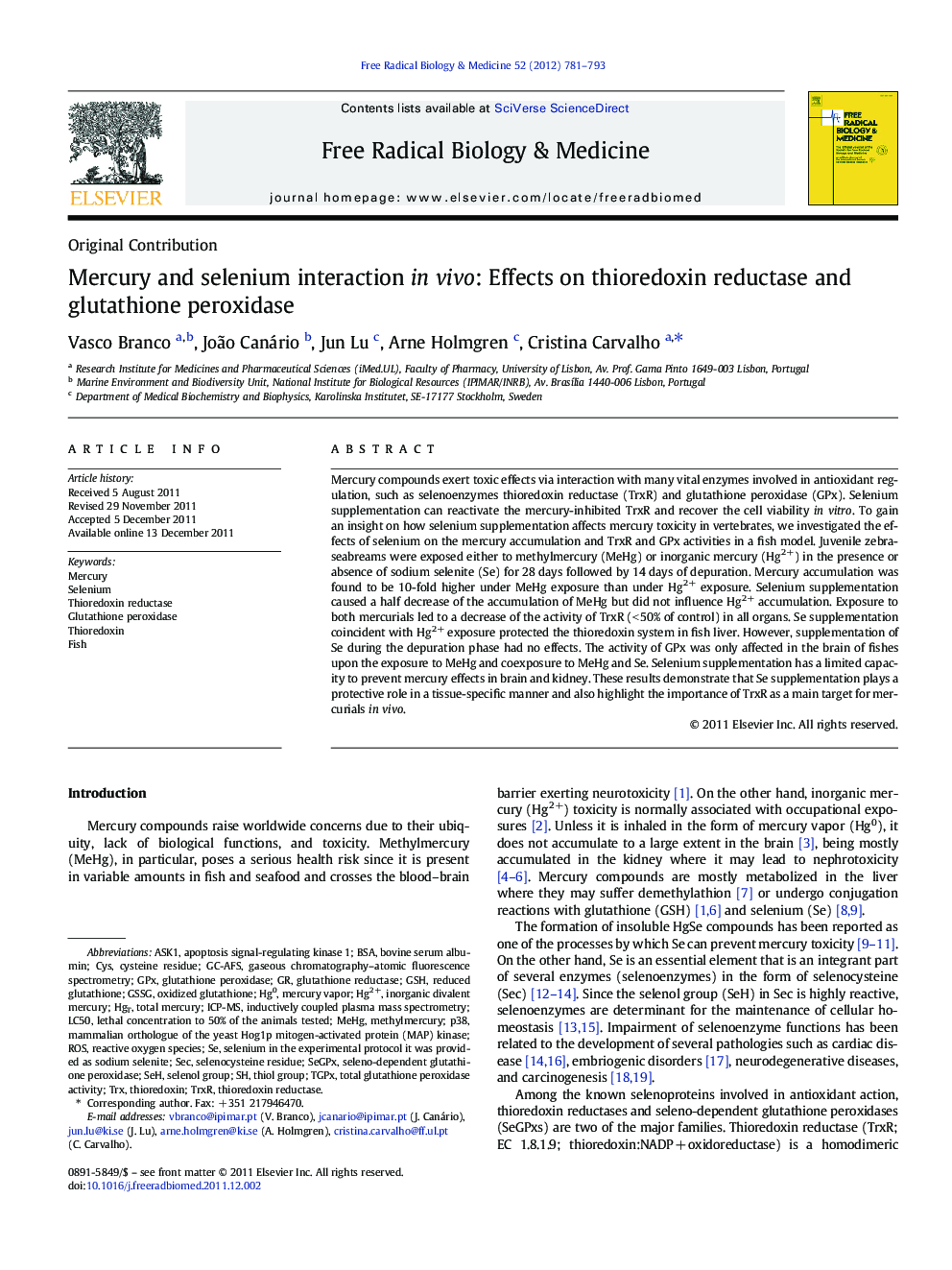| Article ID | Journal | Published Year | Pages | File Type |
|---|---|---|---|---|
| 1909112 | Free Radical Biology and Medicine | 2012 | 13 Pages |
Abstract
Mercury compounds exert toxic effects via interaction with many vital enzymes involved in antioxidant regulation, such as selenoenzymes thioredoxin reductase (TrxR) and glutathione peroxidase (GPx). Selenium supplementation can reactivate the mercury-inhibited TrxR and recover the cell viability in vitro. To gain an insight on how selenium supplementation affects mercury toxicity in vertebrates, we investigated the effects of selenium on the mercury accumulation and TrxR and GPx activities in a fish model. Juvenile zebra-seabreams were exposed either to methylmercury (MeHg) or inorganic mercury (Hg2+) in the presence or absence of sodium selenite (Se) for 28Â days followed by 14Â days of depuration. Mercury accumulation was found to be 10-fold higher under MeHg exposure than under Hg2+ exposure. Selenium supplementation caused a half decrease of the accumulation of MeHg but did not influence Hg2+ accumulation. Exposure to both mercurials led to a decrease of the activity of TrxR (<Â 50% of control) in all organs. Se supplementation coincident with Hg2+ exposure protected the thioredoxin system in fish liver. However, supplementation of Se during the depuration phase had no effects. The activity of GPx was only affected in the brain of fishes upon the exposure to MeHg and coexposure to MeHg and Se. Selenium supplementation has a limited capacity to prevent mercury effects in brain and kidney. These results demonstrate that Se supplementation plays a protective role in a tissue-specific manner and also highlight the importance of TrxR as a main target for mercurials in vivo.
Keywords
GPXCysLC50GSSGMeHgp38ASK1HGTGSHHg0SECBSAHg2+ROSsEHbovine serum albuminCysteine residueMercury vaporinductively coupled plasma mass spectrometryICP-MSMethylmercuryreduced glutathioneTotal mercuryapoptosis signal-regulating kinase 1Thiol groupoxidized glutathioneglutathione reductaseglutathione peroxidaseReactive oxygen species
Related Topics
Life Sciences
Biochemistry, Genetics and Molecular Biology
Ageing
Authors
Vasco Branco, João Canário, Jun Lu, Arne Holmgren, Cristina Carvalho,
